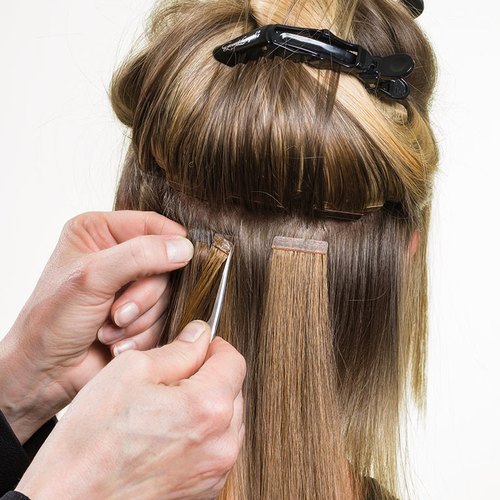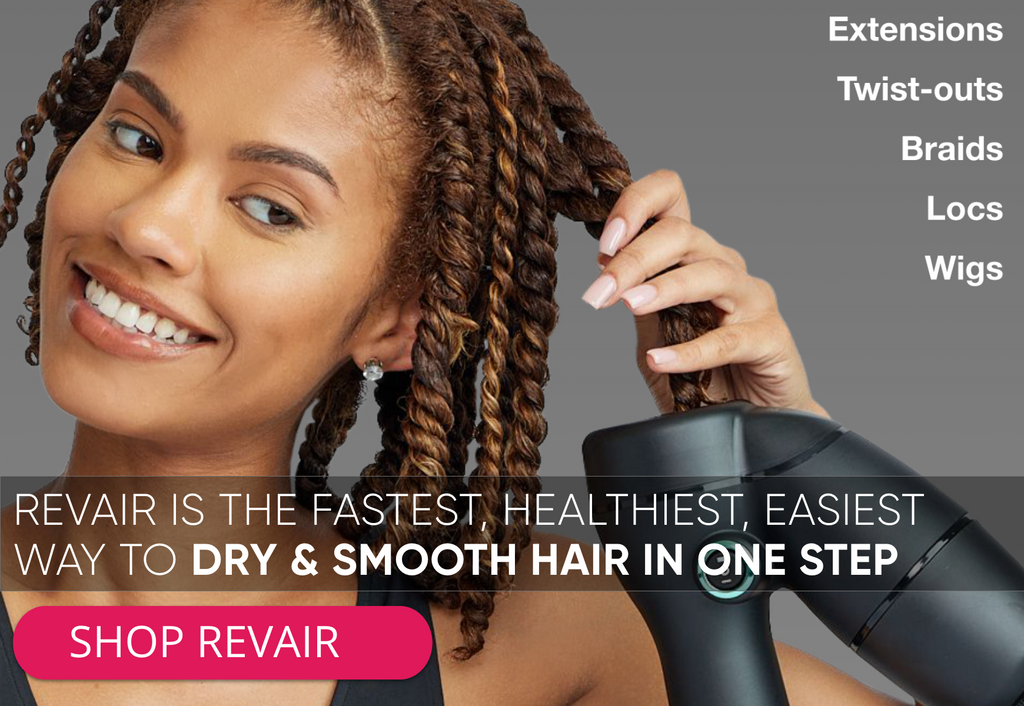
Hair Extensions: All You Need to Know About Them
Would it break your heart to learn that a number of your favorite celebrities with supposed naturally long hair actually rock hair extensions instead?
You would be super surprised at just how much you can transform your look with the right hair extensions. While some may carry tell-tale signs that scream "I'm fake!", there are others with very natural looks and high quality.
One amazing thing we want you to know about hair extensions is that if they are fixed correctly, they appear so natural that no one would believe that you're wearing them.
Now, let's go learn all about hair extensions.
Different Types of Hair Extensions
There is a whole range of hair extensions out there but the most commonly used include sew-in, clip-in, glue-in, micro-link and tape extensions.
For the record, hair extensions can either be made from synthetic hair or human hair.
Sew-in or Weave Hair Extensions
Sew-in extensions are regarded as a permanent extension style and one of the most seamless at that.
This hair extension type is great for girls with really thick locks because it requires a lot of hair to cover it up.
The natural hair is usually braided into a cornrow, which is where the "weave" comes from, and then the extensions are sewn in using a thread of cotton and a needle.
Clip-in Hair Extensions

Clip-in extensions are one of the easiest ways of attaching great hair in minutes. The hair extension wefts usually come with already-attached clips.
This implies that all you have to do is clip the wefts into your hair all by yourself. They are a type of temporary hair extensions; best suited to short-term use.
Glue-in or Bonded Hair Extensions
In this case, a special glue known as Keratin is usually required for bonding the extensions to the hair.
This method is one of the most preferred by ladies because it gives a very natural look and lasts very long if it is well cared for.
Since the extensions would be on for a very long time, it is essential that you have healthy hair follicles before going ahead to glue them in.
The downside to bonded hair extensions is that they cannot be reused once they have been used for the first time.
Micro-link Hair Extensions
The hair extensions are done by looping the extensions all through the wearer's hair and then clamping it down using a pair of pliers and a metal bead.
The extensions have been known to slip down or move up the hair shaft. While this is great for some people, others find it greatly annoying.
The downside to this method is that it can result in hair breakage - the heat required to apply the metal rings can reflect onto the hair, resulting in burning and breakage.
Tape-In Hair Extensions

Using this method, the wefts of hair are simply attached to various parts of the hair of the wearer.
Usually, a single or double-sided tape is used to attach the extensions to the wearer's hair. It is best suited to very thin or fine hair because it would be a lot more difficult to detect.
They can be taken off and re-used, and applying them is super easy too.
How Do I Choose the Best Extension for My Hair?
To choose the best extension for your hair, you should consult your stylist. However, as a tip, you should lean towards a darker shade in order to maintain your natural look.
In terms of texture, ensure that the texture of the extension matches your natural hair texture so that you don't experience any issues air-drying.
Do Hair Extensions Damage the Hair?
Depending on the type and application method of your hair extensions, your hair might experience some damage.
This is especially common in the case of permanent hair extensions that require gluing, bonding and pulling on the hair generally.
Of all the options available, clip-in hair extensions do the least damage.
How Long Do Hair Extensions Last?
Hair extensions all come with different lifespans; while some can be reused, some others can be used only once.
Generally, synthetic extensions last an average of few months while human hair extensions can last upwards of a year provided that they are well taken care of.
In terms of how often you would need to re-apply your hair extensions, micro-link extensions last up to four months, sew-in extensions should be switched out every six to eight weeks and tape or glue extensions should last up between four and eight weeks.
Clip-in extensions last a lot longer since they are temporary.
How Do I Take Care of My Extensions?
Before purchasing any brand of hair extensions, you should know the after-care routine which is specific to it.
However, there are general care routines such as using sulfate-free shampoos, avoiding application of conditioner directly to your hair roots and weekly treatments too.
You should also avoid using oil-based hair products and using hot tools on glue-in and micro-link extensions.
For clip-in hair extensions, they can be maintained very easily - you can wash them after about 20 uses, then brush, shampoo and condition like normal hair before air-drying them.
A great alternative to air-drying extensions (it can take quite a while), is using a RevAir Reverse Air Dryer. The RevAir has 7 different tension speeds, so the lower settings work quickly and safely to dry extensions on-the-go without causing any damage or breakage to the extensions.
Lots of professional stylists use and recommend this method over air-drying or damaging blow drying.
How Much Do Hair Extensions Cost?
The prices of hair extensions largely vary depending on factors like hair quality, quantity needed as well as the location of purchase.
However, on average, semi-permanent extensions like micro-link cost anywhere between $1000- $4000, sew-in and glue-in extensions can be bought for $100- $1000, while clip-ins cost anywhere between $50- $4000.
Human or Synthetic Hair Extensions?
Synthetic hair extensions are made from various blended synthetic fibers and are a lot cheaper, therefore making them more appealing. However, human hair extensions are still the best option.
While synthetic extensions may be difficult to blend with the hair, human hair easily blends with your hair and can even be dyed to match your exact hair tone. They are a lot easier to maintain and have a longer lifespan, too.
There is so much to talk about when it comes to hair extensions but given the information you have gained from this article, we can assure you that you are good to go.
Feel free to contact one of our Advisors if you have any questions about using the RevAir with your natural hair or extensions!















